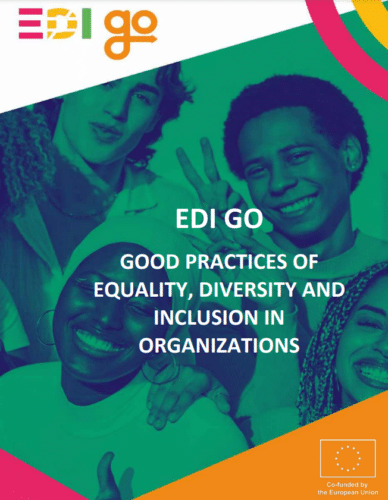Best practices : Equality, Diversity and Inclusion in youth organisations
The document presents a collection of concrete examples of initiatives implemented by youth organisations as part of the EDI GO project. It demonstrates how the principles of Equality, Diversity, and Inclusion (EDI) can be practically and sustainably applied within an organisation.
This document complements the tools developed within the project, such as the EDI charter, the self-assessment tool, and the training resources for trainers. Through practical case studies, it illustrates how these tools can be concretely applied and serves as an inspiring guide for other organisations aiming to replicate these approaches.
Dimensions Addressed in the Best Practices
- Governance and Leadership: Integrating EDI values into organisational policies.
- Space Design: Creating inclusive and accessible environments.
- Attitudes and Relationships: Promoting solidarity and cohesion within teams.
- Community Partnerships: Developing inclusive collaborations.
- Direct Work with Young People: Tools for accessible projects and training.
Examples of Best Practices
- Creating a network of ambassadors for LGBTIQ+ youth in Croatia: This initiative aims to enhance visibility and participation among marginalised youth.
- Translating documents into simplified language at Mission Locale Lys-Tourcoing in France: A step to make information more accessible to young people facing challenges.
- Adapting spaces for people with disabilities in Greece: An example of the importance of physical and cultural accessibility.
Structure of the Best Practices
Each initiative is detailed using a common methodology, including:
- Context
- Identified Needs
- Objectives and Expected Impacts
- Methodology and Required Resources
- Key Steps for Implementation
EDI GO
The EDI GO project aim to reinforce the youth organisations by helping them to improve their practices in equality, diversity and inclusion by using a whole-organizational approach.

